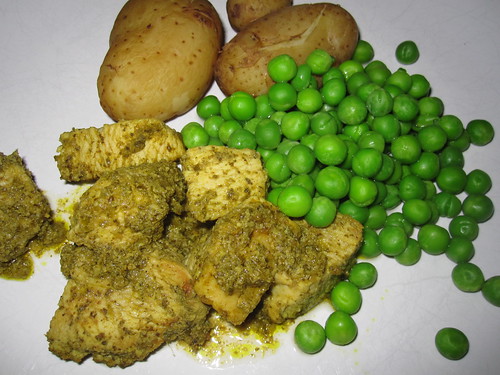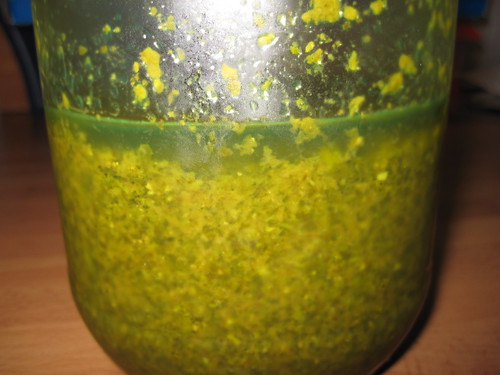
The original recipe is in Swedish and can be found here. Reading through the recipe, the basis for the ice cream was very similar to the very smooth and rich non-churn ice cream I made last year. What also threw me a bit was that after making the ice cream mixture, it was to be poured straight into the springform tin. I had to read the instructions several times, until I realised that the biscuit base goes in at the end, on top of the ice cream mixture - the cake is made upside-down and turned onto a plate before serving.
Ingredients
Makes 10 portions
2 limes with good skin
25 g packet of mint
4 eggs
1.5 dl granulated sugar
200 g cream cheese
4 dl whipping cream
1 dl dulce de leche or caramelised condensed milk
½ dl dark rum or rum essence
200 g plain digestive biscuits
50 g butter
Method
- Grate the zest from the two limes and squeeze out the juice.
- Wash the mint, tear off the leaves and chop them finely - about 1 dl is required (not tightly packed though).

- Separate the egg whites and yolks. Place the whites in a large glass bowl, cover and set aside.
- Place the yolks in a different large bowl, add the sugar and whisk until pale and fluffy.
- At the end whisk in the creak cheese, the lime zest and juice and the chopped mint.
- In a third bowl, whip together the cream and the dulce de leche until stiff. Then fold into the egg mixture and follow with the rum or rum essence.
- Whisk the egg whites to stiff peaks, then fold into the rest of the mixture until fully incorporated.

- Pour into a 25 cm springform and smooth the surface so it's level.
- Break up the digestive biscuits in a food processor and melt the butter gently.

- Add the biscuit crumbs to the butter and stir through, then sprinkle over the ice cream, making sure it's level and push down on it gently.
- Cut out a circular piece of baking paper and cover the crumbs, then cover the springform with cling film and freeze for at least 8 h.
To be honest, I didn't like this one much. The mint was very overpowering and perhaps using spearmint works better, but it's not something that's easy to get hold of where I live, so I'll need to sow some and try again. Also possibly use more lime zest, although it looked like a lot from 2 limes.
I also wanted to make the cake pretty, so I buttered the bottom of the springform, and fixed large mint leaves in a circle, with the idea that the ice cream would freeze and they'd remain stuck to it.

Sadly this was not to be, the leaves remained stuck in the butter.

|

|
One good thing was that as Lundulph and I were preparing to leave for Roger's place, I caught sight of a new cookery show from Mary Berry, where she was demonstrating her favourite Knickerbocker Glory - which is an ice cream with fruits and the ice cream she made from scratch and it was very much the basic recipe as I've done here - eggs, sugar, whipping cream, so since I have some dulce de leche left, I'll make some ice cream next week, perhaps something with pistachios.







